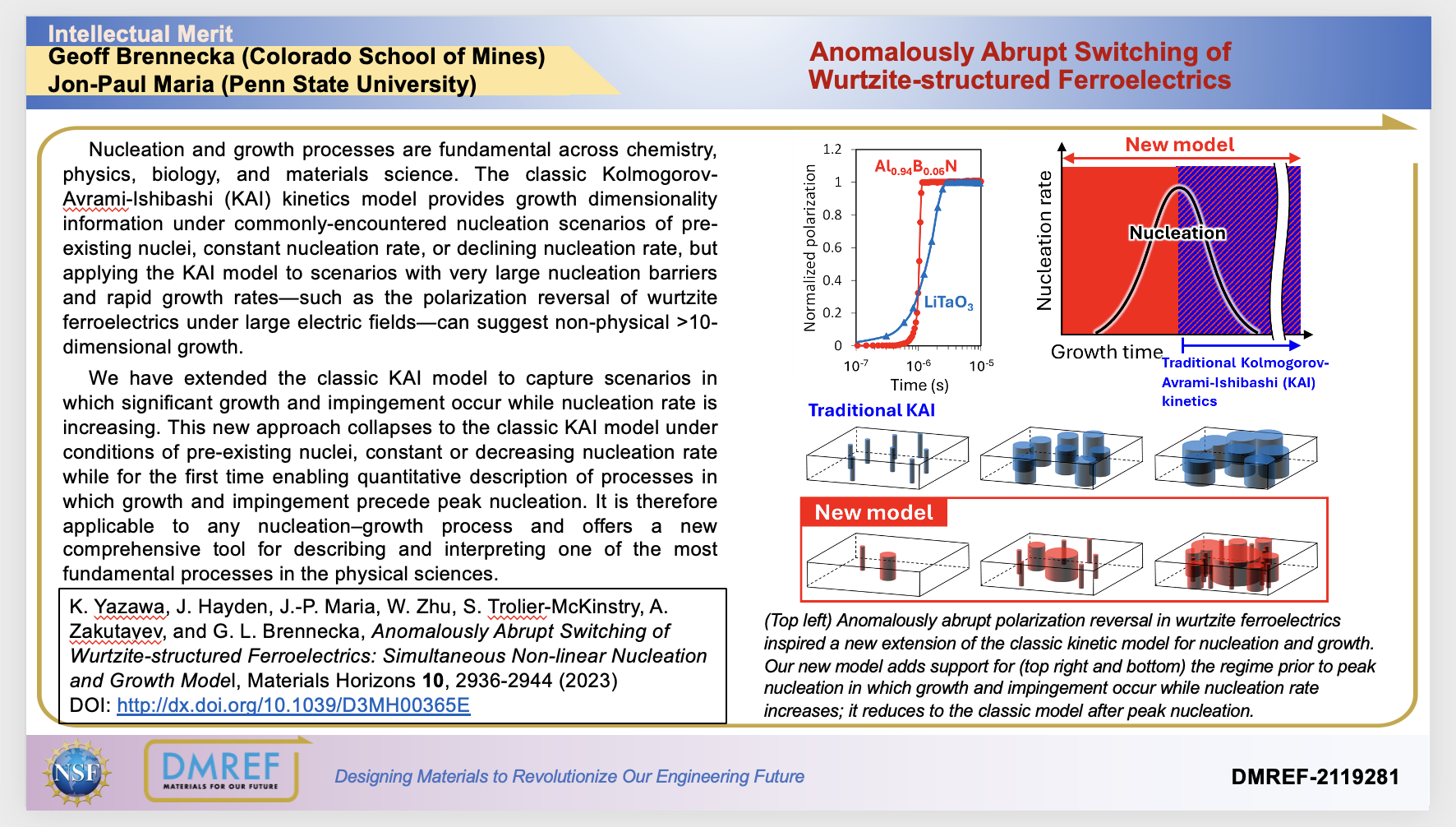Anomalously Abrupt Switching of Wurtzite-structured Ferroelectrics

Nucleation and growth processes are fundamental across chemistry, physics, biology, and materials science. The classic Kolmogorov-Avrami-Ishibashi (KAI) kinetics model provides growth dimensionality information under commonly-encountered nucleation scenarios of pre-existing nuclei, constant nucleation rate, or declining nucleation rate, but applying the KAI model to scenarios with very large nucleation barriers and rapid growth rates—such as the polarization reversal of wurtzite ferroelectrics under large electric fields—can suggest non-physical >10-dimensional growth.
We have extended the classic KAI model to capture scenarios in which significant growth and impingement occur while nucleation rate is increasing. This new approach collapses to the classic KAI model under conditions of pre-existing nuclei, constant or decreasing nucleation rate while for the first time enabling quantitative description of processes in which growth and impingement precede peak nucleation. It is therefore applicable to any nucleation–growth process and offers a new comprehensive tool for describing and interpreting one of the most fundamental processes in the physical sciences.
